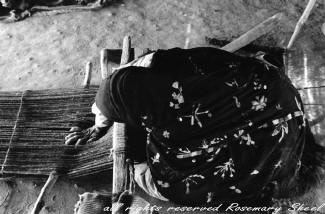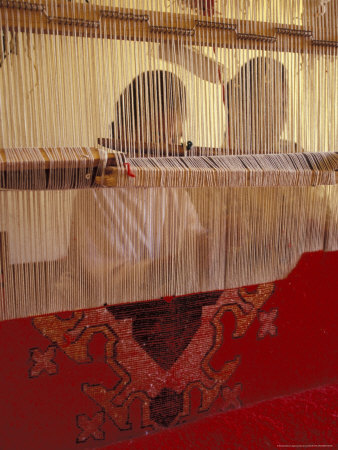The Berbers, being the founders and distributors of Moroccan
textile weaving, are considered to be the most ornate and accomplished textile
weavers. It embodies everything they are, both visually and socially. The women
are the ones who display the creative art work on their bodies like living art
works, and in their homes - a place for relaxation and comfort not utilitarian
activity like the working world, which is almost exclusively reserved for me.
They drape themselves in embroidered shawls, cover their floors with intricate
carpets, cover their faces with tattoos and their hands with henna, and dance
the nights away with each other in beautiful and glittering belly dance
costumes. In Berber culture, it is the women who carry their ethnic identity by
up keeping these practices and displaying the art work in their world and on
their body, making the female body a public symbol for Berber identity.
 “Ethnic identity” in the way I am
using it in this context, means group membership, which is often traced through
the male line, and the symbols displayed on the women’s bodies link those women
to their fertility lines. “Since ethnic identity is a process that is subject
to historical, political, and social dynamics….women’s arts have been
transformed from localized ethnic symbols that represent a transnational Berber
identity”
“Ethnic identity” in the way I am
using it in this context, means group membership, which is often traced through
the male line, and the symbols displayed on the women’s bodies link those women
to their fertility lines. “Since ethnic identity is a process that is subject
to historical, political, and social dynamics….women’s arts have been
transformed from localized ethnic symbols that represent a transnational Berber
identity”
In
modern Morocco, the Berber men have been leaving the rural country side which
the semi-nomadic Berber people typically inhabit. They leave in the hopes that,
like many before them, by setting off for the city they may be able to find
employment to bring money to their home (Hoffman January 29, 2008) . The women are left
at home, to tend to the house and the children, and during that time they
continue to practice the art of weaving and embroidery (Hoffman
January 29, 2008) .
The culture of the art lives on in the women. As the men move to modernity and
adapt the imported Western culture that is taking over so much of the world,
the women in rural Morocco stay true to their cultural identity and continue
the art they have practiced for so many centuries.
 Textile
weaving and embroidery are one of the most ancient forms of artistic expression
in Moroccan culture. It “is the greatest artistic tradition,” what with so many
artisans practicing the art
Textile
weaving and embroidery are one of the most ancient forms of artistic expression
in Moroccan culture. It “is the greatest artistic tradition,” what with so many
artisans practicing the art  Carrying the burden ethnic identity can be
very tiring for women; however it provides them with a certain level of control
upon their own social culture. “…women’s control over the visual symbols of
Berber ethnic identity grants them power and prestige yet also restricts them to
specific roles in the society”
Carrying the burden ethnic identity can be
very tiring for women; however it provides them with a certain level of control
upon their own social culture. “…women’s control over the visual symbols of
Berber ethnic identity grants them power and prestige yet also restricts them to
specific roles in the society”Works Cited
Becker, Cynthia J.
Amazigh Arts in Morocco: Women Shaping Berber Identity. Austin: University of Texas Press, 2006.
Hoffman, Katherine
E. We Share Walls. Wiley-Blackwell Publishing, January 29, 2008.
Jereb, James F. Arts
& Crafts of Morocco. San Francisco: Chronicle Books, 1996.
No comments:
Post a Comment